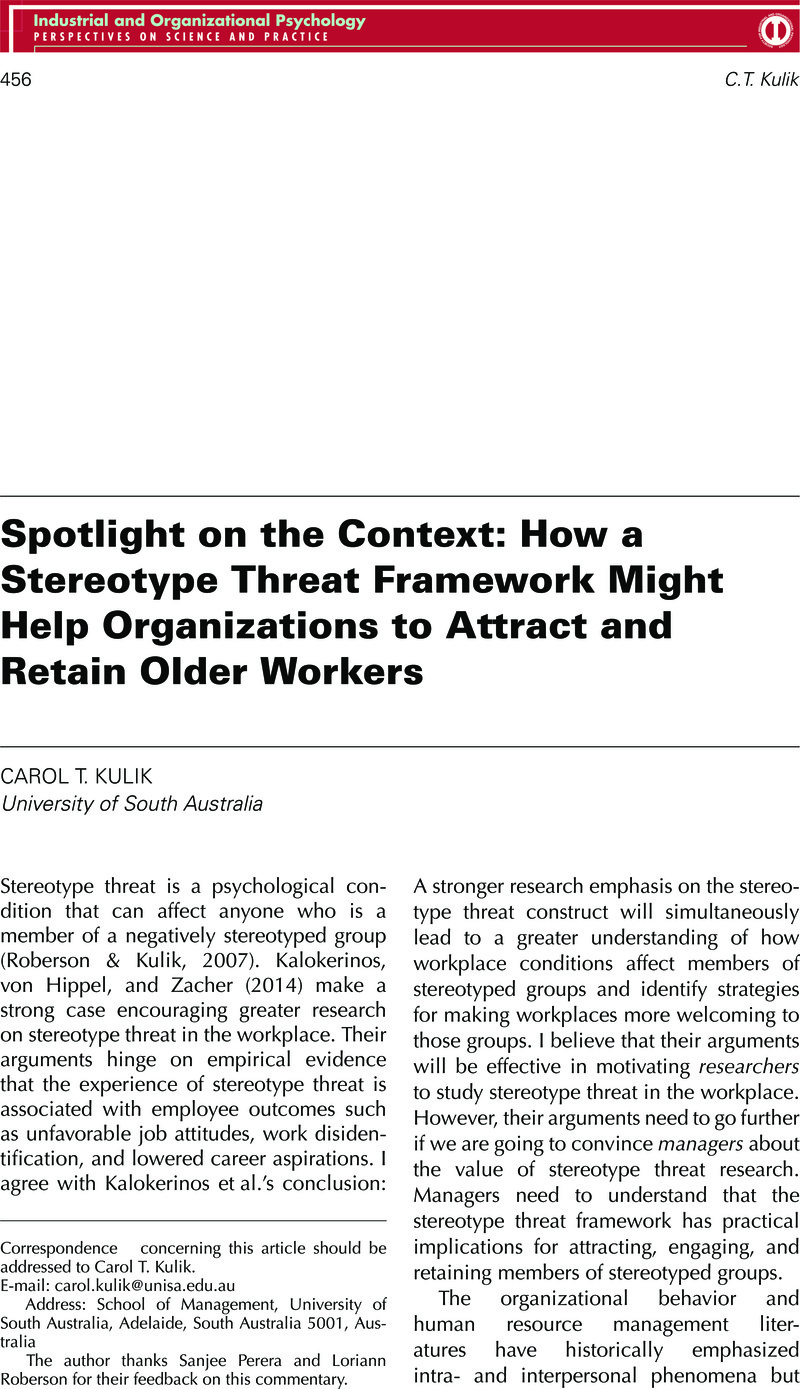Crossref Citations
This article has been cited by the following publications. This list is generated based on data provided by Crossref.
North, Michael S.
and
Fiske, Susan T.
2015.
Intergenerational resource tensions in the workplace and beyond: Individual, interpersonal, institutional, international.
Research in Organizational Behavior,
Vol. 35,
Issue. ,
p.
159.
Casad, Bettina J.
and
Bryant, William J.
2016.
Addressing Stereotype Threat is Critical to Diversity and Inclusion in Organizational Psychology.
Frontiers in Psychology,
Vol. 7,
Issue. ,
Kulik, Carol T.
Perera, Sanjeewa
and
Cregan, Christina
2016.
Engage Me: The Mature-Age Worker and Stereotype Threat.
Academy of Management Journal,
Vol. 59,
Issue. 6,
p.
2132.
Oliveira, Eduardo
and
Cabral Cardoso, Carlos
2018.
Stereotype threat and older worker’s attitudes: a mediation model.
Personnel Review,
Vol. 47,
Issue. 1,
p.
187.
Oliveira, Eduardo André da Silva
and
Cabral-Cardoso, Carlos José
2018.
Buffers or Boosters? The Role of HRM Practices in Older Workers' Experience of Stereotype Threat.
The Journal of Psychology,
Vol. 152,
Issue. 1,
p.
36.
Li, Yiqiong
Perera, Sanjeewa
Kulik, Carol T.
and
Metz, Isabel
2019.
Inclusion climate: A multilevel investigation of its antecedents and consequences.
Human Resource Management,
Vol. 58,
Issue. 4,
p.
353.
Weiss, David
Perry, Elissa L
and
Wang, Mo
2019.
Implications of Generational and Age Metastereotypes for Older Adults at Work: The Role of Agency, Stereotype Threat, and Job Search Self-efficacy.
Work, Aging and Retirement,





